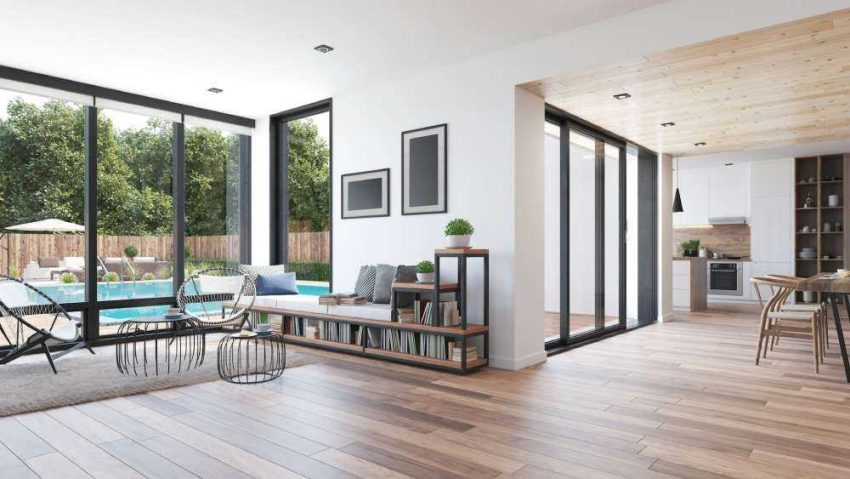In today’s world, where environmental issues are at the forefront, there’s an increasing desire among homeowners to make their living spaces more sustainable. Energy-efficient features have become a priority as climate change continues to influence consumer choices. Often overlooked, window replacement can significantly improve a home’s overall energy efficiency. Far from being mere frames with panes, windows serve multiple functions. They offer light and ventilation and also play a pivotal role in the thermal performance of a building.
This shift towards sustainable living solutions reflects a broader trend to reduce energy consumption and minimize environmental footprints. By understanding how windows contribute to energy efficiency, homeowners can make informed decisions about improvements that may seem small but have a significant impact on energy savings and comfort levels.
The Science of Window Insulation
To appreciate how energy efficient windows influence energy efficiency, one must first understand the concept of thermal transfer. This process is responsible for the movement of heat through materials, affecting the indoor climate of a home. During colder months, heat inside a house seeks to escape to the cooler outside environment, while during warmer months, heat infiltrates through glass surfaces.
Modern window technologies aim to reduce thermal transfer, thereby maintaining indoor temperatures more efficiently. High thermal transfer leads to substantial energy loss as HVAC systems work overtime to compensate. As such, addressing this issue through effective window solutions can result in significant energy savings, making a noticeable difference in monthly utility bills.
Innovative Window Technologies
The window industry has witnessed remarkable innovations designed to tackle the challenges of energy efficiency. Low-emissivity (Low-E) glass is one such technological advancement. It involves applying a microscopic metallic coating to window glass, which reflects infrared heat while allowing visible light to pass through. This reduces the amount of UV light entering the home, keeping interiors cooler in summer.
Additionally, double and triple-pane windows provide enhanced insulation by trapping layers of air or inert gas such as argon or krypton between multiple panes of glass. This design minimizes heat loss, enhancing energy conservation. While the initial investment might be higher, the decrease in energy bills over time often justifies the expense, offering a high return on investment for environmentally conscious homeowners.
Installation: The Key to Efficiency
The journey to harnessing the full potential of energy-efficient windows doesn’t end with their selection. Professional installation is a critical step that ensures windows function optimally. A perfect fit prevents drafts and air leakage, common issues that compromise the benefits of modern windows.
Common mistakes, such as improper sealing or incorrect sizing, can negate the energy-saving properties of even the best window technologies. Therefore, hiring qualified professionals for installation and relying on thorough assessments of the construction site is paramount. Attention to detail during this phase can make a substantial difference in energy performance and indoor comfort.
Maintenance for Long-Term Benefits
Regular maintenance is fundamental for preserving the benefits of energy-efficient windows. Simple maintenance tasks, like cleaning window tracks to ensure smooth operation and replacing worn-out seals, can prevent air leaks and ensure the thermal performance of windows.
Moreover, being vigilant for signs of deterioration, such as condensation between panes or difficulty in opening and closing, allows for timely interventions. Addressing minor problems before they turn into significant repairs can save homeowners from costly replacements, ensuring windows continue to offer benefits for years to come.
The Environmental Impact of Energy-Efficient Windows
Investing in energy-efficient windows offers far-reaching environmental benefits. By lessening dependence on heating and cooling systems, these windows contribute to a substantial reduction in greenhouse gas emissions. This is a crucial step towards reducing the carbon footprint of residential buildings.
Energy-efficient windows align seamlessly with eco-friendly architectural designs, supporting sustainability goals on both a personal and community level. As building codes and environmental standards become increasingly stringent, integrating such green options into home design reflects a commitment to future-proof living spaces.
Choosing the Right Windows for Your Home
Selecting the ideal windows involves a comprehensive understanding of several factors. Climate conditions play a critical role in identifying the type of window technology best suited for a location. Additionally, home orientation affects sun exposure, guiding decisions on window placement and glazing options.
Furthermore, considering architectural style ensures that new windows complement the existing aesthetics of a home. Armed with this knowledge, homeowners can confidently invest in window solutions that promise lasting benefits, maintaining both functionality and aesthetic appeal.
Conclusion
Windows are a vital piece of the energy efficiency puzzle, offering both functional and environmental advantages. By embracing energy-efficient window technologies, homeowners can step confidently into a future where sustainability intersects with comfort, paving the way for homes that are as efficient as they are environmentally friendly.

